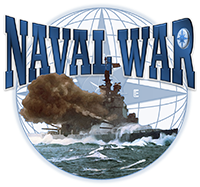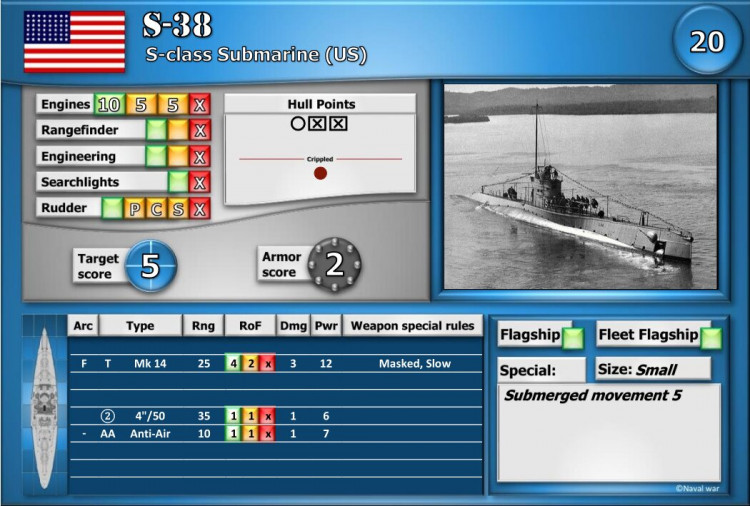S-class Submarine
Description
Ships in class: 50
- Group I (S-1 class, or "Holland" type): 25 boats, S-1 and S-18 to S-41, built by Bethlehem Steel at Fore River Shipyard in Quincy, Massachusetts and Union Iron Works in San Francisco, California, as subcontractors for the designer, the Electric Boat Company.
- Group II (S-3 class, or "Navy Yard" type): 15 boats, S-3 to S-17, built at the Portsmouth Navy Yard and Lake Torpedo Boat at Bridgeport, Connecticut.
- Group III (S-42 class, or "2nd Holland" type): 6 boats, S-42 to S-47, built at Fore River.
- Group IV (S-48 class, or "2nd Navy Yard" type): 4 boats, S-48 to S-51, built by Lake.
The United States' S-class submarines, often simply called S-boats (sometimes "Sugar" boats, after the then contemporary Navy phonetic alphabet for "S"), were the first class of submarines with a significant number built to United States Navy designs.
These boats saw service in World War II in both the Atlantic and the Pacific. Smaller and slower than the later fleet submarines produced for war service, and lacking the range for Pacific Ocean patrols (as well as being 20 years old), they were used in reconnaissance and supply roles, as well as for coastal defense. S-boats operated in the Alaska theater during the aftermath of the Battle of the Aleutian Islands, based out of Dutch Harbor. Some also operated out of Australia in the Southwest Pacific Area. They were withdrawn from front-line service by late 1943 as more Gato-class fleet submarines became available.

